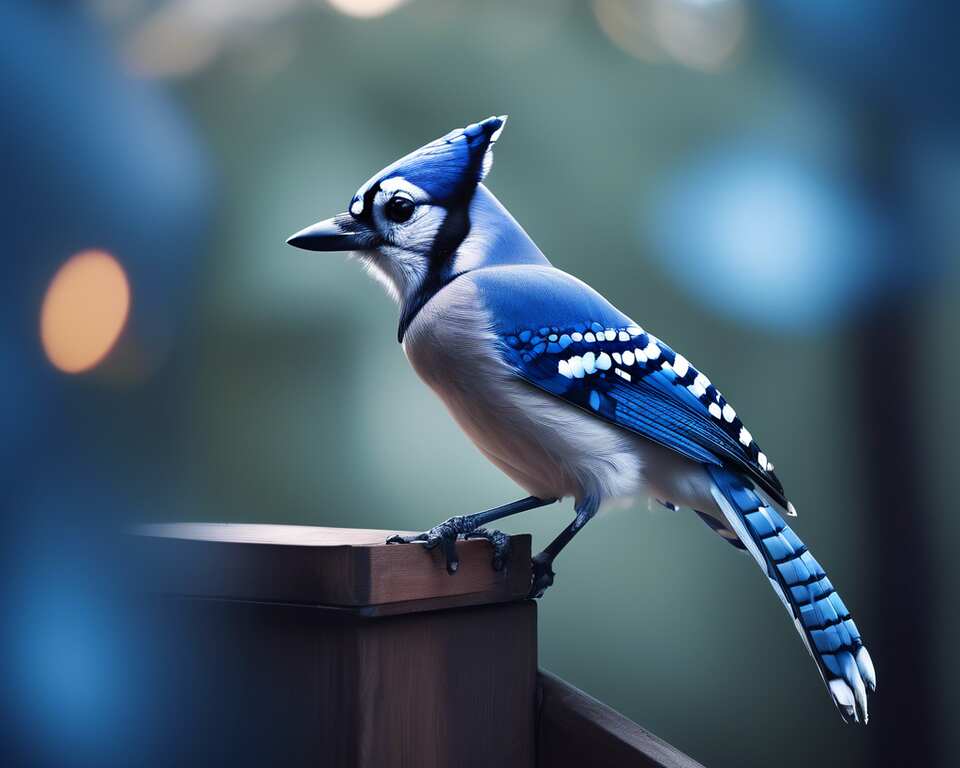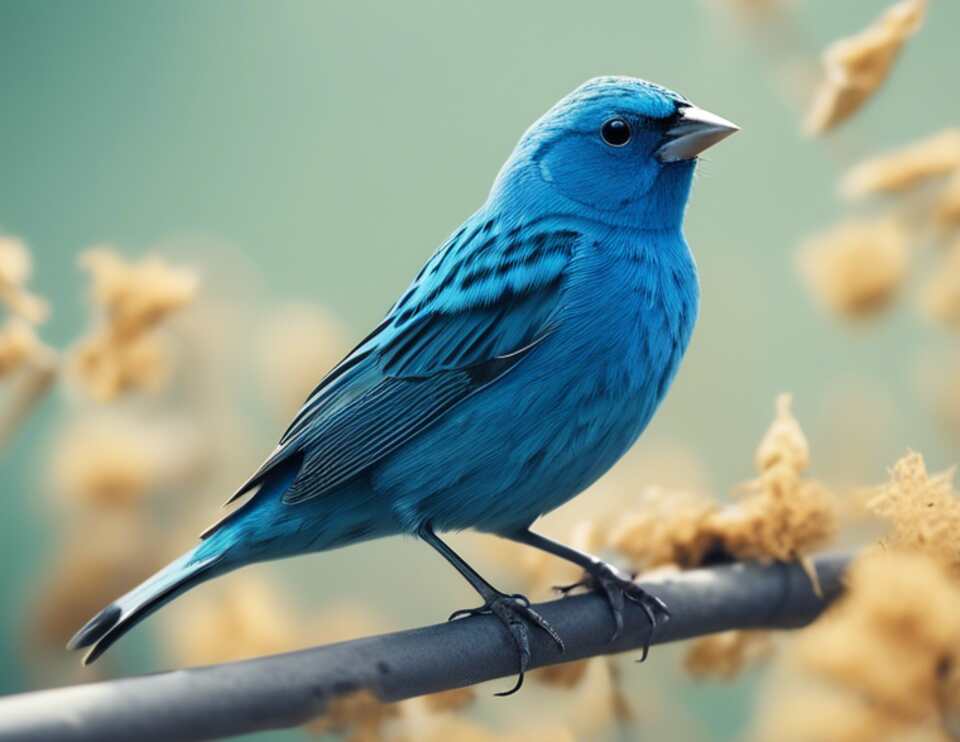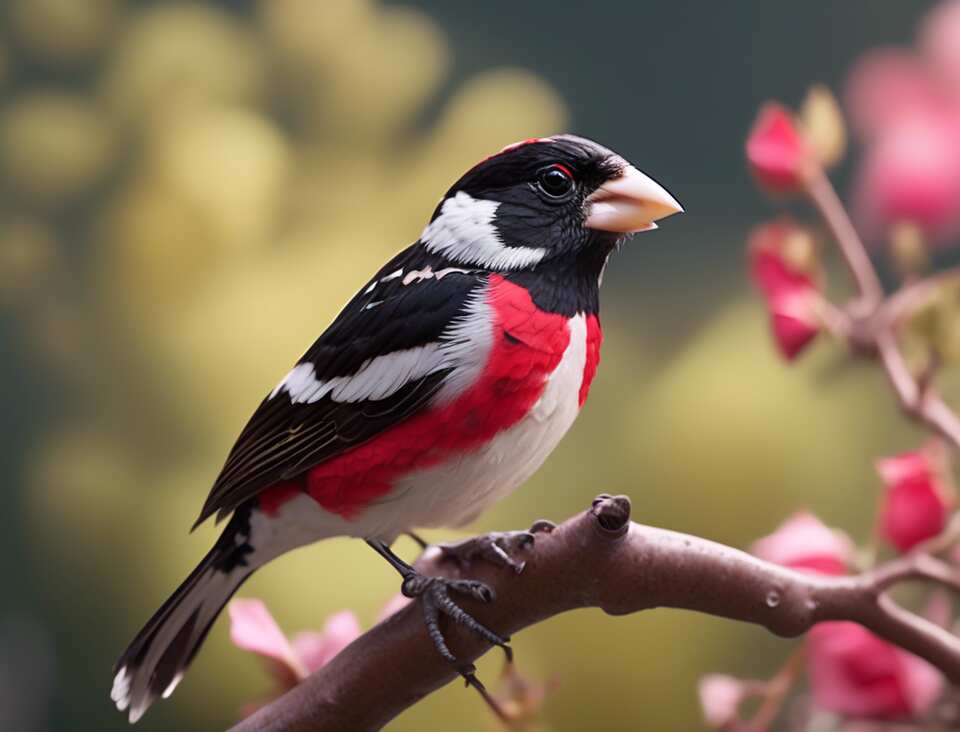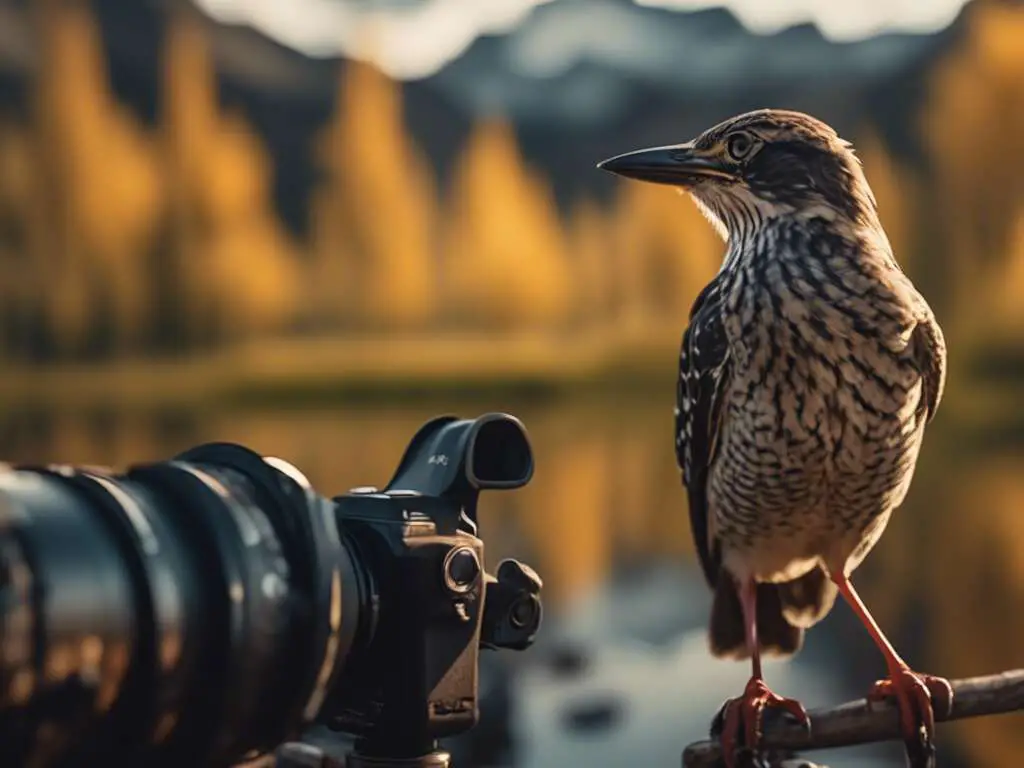
Birdwatching, also known as birding, is a captivating hobby that has gained immense popularity across North America. This pastime allows you to connect with nature, sharpen your observational skills, and discover the incredible diversity of avian life right in your backyard or local parks. North America is home to over 800 bird species, making it a bird lover’s paradise.
In this comprehensive guide, we’ll walk you through everything you need to know to start your birdwatching journey. From essential equipment to identification techniques, seasonal tips, and ways to engage with the birding community, this guide will provide you with a solid foundation to embark on this rewarding adventure.
Whether you’re looking for a new outdoor hobby, a way to appreciate nature, or simply curious about the feathered visitors in your neighborhood, birdwatching offers something for everyone. So, grab your binoculars, and let’s dive into the wonderful world of birds!
Table of Contents
Getting Started with Birdwatching
Essential Equipment
To begin your birdwatching journey, you’ll need some basic equipment:
- Binoculars: These are your most important tool. For beginners, a pair of 8×42 or 10×42 binoculars is ideal, offering a good balance between magnification and field of view.
- Field Guide: A comprehensive guide to birds in North America. Popular options include “The Sibley Guide to Birds” or “National Geographic Field Guide to the Birds of North America.”
- Notebook and Pen or checklist: Try one one of these checklists, for recording your observations, including species, date, location, and behavior.
- Comfortable Clothing: Dress in layers and wear comfortable, waterproof shoes for various weather conditions.
- Optional: Camera: If you’re interested in bird photography, a camera with a good zoom lens can enhance your experience.
Choosing the Right Gear
When selecting binoculars, consider factors like magnification, objective lens size, and weight. Visit a local outdoor or birding store to try different models and find one that feels comfortable to you. Many stores offer expert advice to help you choose.
For field guides, consider both book and app options. Apps like Merlin Bird ID or Audubon Bird Guide offer the advantage of bird call recordings and real-time range maps.
Birdwatching Basics
Finding Local Birdwatching Spots
Start by exploring your own backyard or neighborhood. Local parks, nature reserves, and bodies of water are also excellent spots for birdwatching. Websites like eBird.org can help you find popular birding locations in your area.
Basic Birdwatching Techniques
- Be Patient and Quiet: Birds are easily startled. Move slowly and speak softly to avoid scaring them away.
- Use Your Ears: Many birds are heard before they’re seen. Learn to identify common bird calls in your area.
- Observe Behavior: Watch how birds fly, feed, and interact. This can be as important as visual identification.
- Respect Nature: Always follow local guidelines, stay on designated paths, and avoid disturbing nesting sites.
Understanding Bird Behavior and Habitats
Understanding bird habitat preferences is crucial for predicting where certain species can be found.
- Waterfowl: Prefer lakes, ponds, marshes, and coastal wetlands. Species include ducks (e.g., Mallard, Wood Duck), geese (e.g., Canada Goose), and swans (e.g., Tundra Swan).
- Woodpeckers: Found in wooded areas such as forests, woodlots, and parks with mature trees. Species include Downy Woodpecker, Hairy Woodpecker, and Pileated Woodpecker.
- Meadowlarks and sparrows: Frequent open grasslands, prairies, meadows, and agricultural fields. Species include Eastern Meadowlark, Western Meadowlark, and various sparrows like Song Sparrow and Savannah Sparrow.
- Warblers: During migration, found in a variety of habitats including forests, woodlands, and gardens with dense vegetation. Species include Yellow Warbler, Black-throated Green Warbler, and Blackburnian Warbler.
- Hummingbirds: Found in gardens, open woodlands, and areas with abundant flowers. Species include Ruby-throated Hummingbird (Eastern U.S.), Anna’s Hummingbird (Western U.S.), and Rufous Hummingbird.
- Owls: Often found in forests, woodlands, and mixed habitats. Species include Great Horned Owl, Barn Owl, and Eastern Screech-Owl.
- Hawks and Eagles: Prefer open areas such as grasslands, marshes, and along coastlines. Species include Red-tailed Hawk, Bald Eagle, and Cooper’s Hawk.
- Shorebirds: Found along coastlines, beaches, mudflats, and estuaries. Species include Sandpipers, Plovers, and Avocets.
- Herons and Egrets: Commonly seen near water bodies like lakes, rivers, and wetlands. Species include Great Blue Heron, Snowy Egret, and Green Heron.

Identifying Birds
Key Features to Look For
When trying to identify a bird, focus on these characteristics:
- Size and Shape: Compare the bird’s size to familiar species and note the shape of the bill, tail, and overall body structure.
- Color Pattern: Observe the bird’s main colors and any distinctive markings, which are often crucial for accurate identification.
- Behavior: Pay attention to how the bird moves—whether it’s climbing a tree, wading in water, or soaring overhead—each behavior provides clues to its identity.
- Habitat: Take note of where you spotted the bird, as different species have specific habitat preferences, aiding in narrowing down possible matches.
Using Field Guides and Apps
Field guides typically organize birds by family or color. When using a guide:
- Start with the general shape and size of the bird.
- Look for distinctive features like eye stripes, wing bars, or colored patches.
- Read the description and range map to confirm your identification.
Bird identification apps often allow you to input observed characteristics to narrow down possible species. Some even use AI to identify birds from photos or recordings.
Learning Bird Songs and Calls
Recognizing bird vocalizations can significantly enhance your birdwatching experience:
- Start with common birds in your area.
- Use mnemonics to remember calls (e.g., the chickadee’s “cheeseburger” call).
- Practice with online resources or apps that play bird songs.
- Join local birding walks to learn from experienced birders.
Common Birds in North America
Here’s a list of some common birds you’re likely to encounter as a beginner:
- American Robin: A familiar sight with its red breast and gray back.
- Northern Cardinal: Bright red males and reddish-brown females with distinctive crests.
- Blue Jay: Bold blue and white with a noisy call.
- Black-capped Chickadee: Small with a black cap and bib, common at feeders.
- Red-winged Blackbird: Males are black with red and yellow shoulder patches.
- American Goldfinch: Bright yellow males in summer, more subdued in winter.
- House Sparrow: Small, brown, and common in urban areas.
- Downy Woodpecker: Small black and white woodpecker with a short bill.
- Mourning Dove: Grayish-brown with a long tail, often seen on wires or ground.
- Canada Goose: Large waterfowl with a distinctive black neck and white cheek patch.
- Mallard: Common dabbling duck with glossy green head and white collar.
- Bald Eagle: Majestic bird of prey with white head and tail, brown body.
- Turkey Vulture: Large, soaring bird with a bald red head and dark body.
- Great Blue Heron: Tall, gray-blue wader often seen near water.
- Osprey: Fish-eating raptor with distinctive white head and dark eye stripe.
- Killdeer: Plover with bold black and white markings and distinctive “kill-deer” call.
- Eastern Bluebird: Small thrush with bright blue back and reddish-brown breast.
- Barn Swallow: Graceful flyer with blue upperparts and deeply forked tail.
- Ruby-throated Hummingbird: Tiny bird with iridescent green back and bright red throat.
- American Crow: Large, all-black bird known for its intelligence and loud cawing.
- Northern Flicker: Woodpecker with brown barred plumage, spotted belly, and red nape patch.
- Tree Swallow: Shiny blue-green upperparts with white underparts and forked tail.
- White-breasted Nuthatch: Blue-gray above with white face, underparts, and black cap.
- American Kestrel: Small falcon with rusty back and tail, often seen perched on wires.
- Chipping Sparrow: Small sparrow with rusty cap, gray face, and white eyebrow.
- Yellow-rumped Warbler: Grayish with yellow patches on rump, sides, and crown.
- Eastern Towhee: Large sparrow with black upperparts, rusty sides, and white belly.
- Northern Mockingbird: Gray bird with white patches on wings, known for its mimicking ability.
- Brown-headed Cowbird: All-black bird with brown head (male) and dull gray (female).
- Common Grackle: Large blackbird with iridescent purple head and bronze body.
- Baltimore Oriole: Vibrant orange and black bird with pointed beak and loud, flute-like song.
- Carolina Wren: Small bird with reddish-brown upperparts and white eyebrow.
- House Finch: Small finch with brown streaks and hints of red on males.
- Purple Martin: Large swallow with glossy blue-black plumage and forked tail.
- Indigo Bunting: Small, all-blue bird often seen near woodland edges.
- Eastern Phoebe: Small flycatcher with gray-brown upperparts and white underparts.
- American Coot: Blackish waterbird with white bill and frontal shield.
- Common Loon: Large, black-and-white diving bird with distinctive haunting calls.
- Ring-billed Gull: Medium-sized gull with yellow bill and black ring near tip.
- Cedar Waxwing: Silky, brownish bird with crest, black mask, and yellow tip on tail.
- Northern Shoveler: Duck with large spatulate bill, cinnamon body, and green head (male).
- Yellow Warbler: Small, yellow bird with reddish streaks on breast.
- Pileated Woodpecker: Large woodpecker with striking red crest and black body.
- Common Yellowthroat: Small warbler with yellow throat and distinctive black mask.
- Sandhill Crane: Tall, gray bird with red forehead patch and loud, bugling call.
- American Tree Sparrow: Small sparrow with rusty cap and bicolored bill.
- Eastern Meadowlark: Ground-dwelling bird with bright yellow underparts and black “V” on chest.
- Wood Duck: Colorful duck with iridescent green and purple head (male).
- Northern Harrier: Long-winged, long-tailed hawk with distinctive facial disk.
- American White Pelican: Large, white waterbird with huge bill and black wingtips in flight.
These birds represent a diverse range commonly found across various habitats in North America, providing ample opportunities for observation and learning for birdwatching enthusiasts.
These birds can be found in various habitats across North America. Observing them will help you develop your identification skills before moving on to less common species.

Seasonal Birdwatching Tips
Birdwatching varies significantly with the seasons due to migration patterns and breeding behaviors.
Spring (March-May)
- Many birds return from their southern wintering grounds, bringing bursts of activity and song.
- Look for colorful warblers passing through during migration, showcasing vibrant plumage.
- Observe nesting behaviors such as nest-building and territorial displays.
- Enjoy courtship displays, where males often sing and perform elaborate dances to attract mates.
Summer (June-August)
- Resident birds are actively raising their young, making this a busy time for feeding and care.
- Early morning is the best time for birdwatching as birds are most active and vocal.
- Look for fledglings learning to fly and feed near their nesting sites.
- Watch adult birds teaching their young essential skills, such as foraging and predator avoidance.
Fall (September-November)
- Fall migration begins, with many birds heading south to warmer climates.
- Witness large flocks of geese and ducks gathering in preparation for migration.
- Some birds, such as shorebirds and raptors, may pass through on their way south.
- Notice changes in plumage as birds transition to their non-breeding colors, often more subdued than their breeding plumage.
Winter (December-February)
- Many birds from northern regions migrate south for the winter, seeking milder temperatures and food sources.
- Look for winter-only visitors like snow buntings, which often flock together in open fields.
- Keep backyard feeders stocked, as they become essential for resident birds during the colder months.
- Watch for seasonal specialties like snowy owls, which occasionally venture south in search of food.
Each season offers unique opportunities to observe bird behaviors and adaptations as they navigate changes in weather, food availability, and breeding cycles. By understanding these seasonal patterns, birdwatchers can enhance their experience and appreciation of North America’s diverse avian life.
Understanding Bird Migration
North America has four major flyways for migrating birds:
- Pacific Flyway (West Coast)
- Central Flyway (Great Plains)
- Mississippi Flyway (Mississippi River and Great Lakes)
- Atlantic Flyway (East Coast)
Learning about these flyways can help you predict when and where to see certain migratory species.
Creating a Bird-Friendly Environment
Attracting birds to your backyard can provide excellent birdwatching opportunities right at home.
Setting Up Bird Feeders
- Offer a variety of foods: sunflower seeds, nyjer seeds, suet, and fruit.
- Place feeders at different heights to attract diverse species.
- Keep feeders clean to prevent the spread of diseases.
Installing Birdhouses
- Choose houses designed for specific species you want to attract.
- Place houses away from feeders and at appropriate heights.
- Clean out houses annually after the breeding season.
Providing Water Sources
- Install a birdbath or small fountain.
- Keep water fresh and clean.
- In winter, use a heater to prevent freezing.
Creating Natural Habitat
- Plant native trees, shrubs, and flowers that provide food and shelter.
- Leave some areas of your yard “messy” with fallen leaves and branches.
- Avoid using pesticides that can harm birds and their food sources.

Joining the Birdwatching Community
Connecting with other birdwatchers can enhance your experience and knowledge:
Local Birdwatching Groups
- Check with your local Audubon Society chapter for group outings and events.
- Join a local nature center or wildlife preserve for guided walks.
- Look for birdwatching clubs in your area through social media or local listings.
Online Resources and Forums
- eBird.org: Submit your sightings and explore data from other birders.
- BirdingPal.org: Connect with local birders when traveling.
- Facebook Groups: Join regional birdwatching groups to share sightings and ask questions.
Citizen Science Projects
Participate in projects that contribute to bird conservation and research:
- Christmas Bird Count: Annual census of birds in the Western Hemisphere.
- Great Backyard Bird Count: A global count held each February.
- Project FeederWatch: Monitor birds at your feeders from November to April.
Conclusion
Birdwatching is a rewarding hobby that offers endless opportunities for learning and discovery. As you begin your journey, remember that patience and practice are key. Each time you step outside with your binoculars, you’ll notice more details and recognize more species.
We hope this guide has provided you with the foundation to start your birdwatching adventure in North America. Remember, the joy of birdwatching comes not just from identifying species, but from observing their behaviors, understanding their roles in ecosystems, and appreciating the wonder of the natural world.
So grab your gear, head outdoors, and start exploring the fascinating world of birds. Happy birding!
Additional Resources
- National Audubon Society (audubon.org)
- Cornell Lab of Ornithology (birds.cornell.edu)
- American Birding Association (aba.org)
- “Sibley’s Birding Basics” by David Allen Sibley (book)
- “What It’s Like to Be a Bird” by David Allen Sibley (book)



